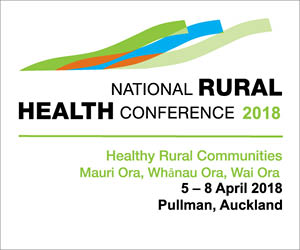Red-flag meningitis symptoms reported by a 20-year-old student should have led to better questioning by telephone triage nurses, says a Health and Disability Commissioner’s report.
Health and Disability Commissioner Anthony Hill has found that a student health service doctor (‘Dr D’), and a nurse did not treat red-flag meningitis symptoms reported by a student (‘Ms A’), who phoned and visited the service over several days in May 2014, with reasonable care and skill.
The student later collapsed in her student flat and was taken by an ambulance to ED, where she was diagnosed with meningitis and admitted to ICU. As a result of the meningitis she has been left with an ongoing neurological disability and adverse consequences, including hearing loss, daily headaches and extreme fatigue.
Hill found that Dr D failed to take an adequate history from Ms A, did not undertake an adequate physical assessment, and did not consider broader diagnoses including meningitis.
He found that ‘RN C’, the fourth nurse to assess the student, had failed to ask focused questions relating to the student’s red-flag symptoms during a telephone call with the student’s friend; she did not consider meningitis and did not advise them to call an ambulance immediately. Hill also made adverse comments about the documentation of two other nurses, ‘RN F’ and ‘RN E’, who took earlier triage calls from the student (see summary details of case below).
The commissioner recommended that the university student health service updated the Office of the Health and Disability Commissioner (HCD) on its use of generic protocols to provide consistency of telephone triage and clinical record-taking.
The health service said at the time of the event that its nurses, including RN C, had been provided ongoing training in triage skills and the triage room had had a copy of the Telephone Guidelines in General Practice Setting (January 2005), which sets out prompt questions to ask someone with cold symptoms or a headache to check whether meningitis-related symptoms were also present.
Since the incident the service had made improvements to its nursing assessment of acute and unscheduled presentations and had developed protocols to provide consistency of telephone triage and clinical record-taking. These included standardised scripts, a telephone triage documentation tool, and a process to exclude life-threatening emergencies on all calls.
Dr D had undergone a programme to enhance his clinical record practice, including attending a workshop and undertaking regular case reviews as part of one-on-one supervision. RN C had had one-on-one telephone supervision for approximately two months and after online training had returned to telephone duties.
CASE SUMMARY
The 20-year-old university student (Ms A) first presented to the student health service with a sore throat and tiredness over two days. She was seen by a nurse who took a throat swab and advised her on sore throat management.
Two days later (day three) she phoned the service and talked to RN E, who noted she was feeling much worse – including headaches and fever – and arranged a follow-up appointment with Dr D that afternoon.
Ms A tried to cancel the appointment as she felt too unwell to attend, but her boyfriend phoned at 4pm and spoke to RN F, who recorded that Ms A was getting worse and was unable to swallow or get out of bed. RN F made a new appointment for Ms A with Dr D.
Ms A and her boyfriend arrived at the service around 4.30pm to see Dr D. He noted worsening symptoms and that she was sweaty, tearful, had a runny nose, a temperature of 39.5, her throat was red, her ears mildly red and that the throat swab had come back normal. He diagnosed flu-like illness and prescribed pain relief and anti-nausea medications.
The next day Ms A deteriorated further and her flatmate rang the service around 3.10pm and spoke to RN C.
She noted: “Has been unwell now for quite a few days and seen here x3 already. Bad headache — pale and not keeping food down — vomiting. Not particularly responsive to her friends apparently. Sounds miserable in the background and crying. Friends will bring her down as soon as they can and if they cannot get her up I suggested they call an ambulance but aware will cost.” RN C made the first available appointment for Ms A but soon after Ms A collapsed and an ambulance was called, leading to the diagnosis and by 6.15pm she was in intensive care.
After receiving expert advice, the commissioner was critical that Dr D in his consultation did not take an adequate history, including questioning about headache, vomiting, rash, confusion, photophobia, and recent travel, also that he did not take her blood pressure or examine her for signs of meningeal irritation. “I am highly concerned that, given Ms A’s symptoms, Dr D did not consider a broader differential diagnosis (including meningitis).”
HDC’s RN clinical advisor Dawn Carey said that the documentation from Ms A’s previous visits and calls to the service had raised red-flag symptoms, such as bad headache, vomiting and not being particularly responsive, which should have prompted focused questioning from RN C. She said she would have expected RN C to have considered meningococcal disease as a possibility. She found the assessment by RN C “moderately departed from accepted nursing standards” and her advice in response to Ms A’s symptoms was “insufficient” and she should have advised Ms A’s friends to call an ambulance immediately.
RN E told HDC that she was adamant that she would have questioned Ms A about whether the student was suffering any red-flag symptoms and the fact that her notes don’t mention this indicated to her that the answers to her red-flag symptom inquiries were all negative.
Carey advised HDC that even if RN E did ask focused questions about the red flags, she was critical that she did not document the questions and responses from Ms A.
RN F said she advised Ms A’s boyfriend when he called that if there was any breathing restrictions he should call an ambulance, but if she was happy to come to the service she would be triaged straight away and see Dr D.
Carey acknowledged that RN F did raise calling an ambulance, but was also critical of RN F’s lack of focused further questions on the red-flag symptoms and documenting of what questions were asked and answered.
The full HDC report can be viewed here






















